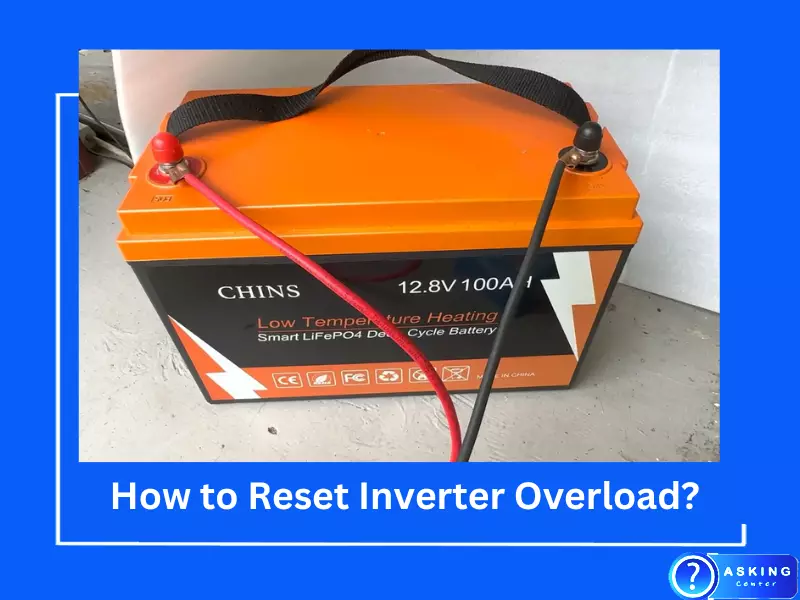Electricity is a critical part of our lives, powering our homes and various devices. Inverters play a pivotal role in this, converting DC power to AC power and ensuring our homes stay lit and our appliances keep running. Yet, like all electronic equipment, inverters too can encounter issues, one of the most common being an overload.
In the simplest terms, an inverter overload occurs when the power demand from connected appliances exceeds the inverter’s capacity. This can lead to several problems, such as the inverter tripping, stopping working altogether, or even damaging connected devices. It’s therefore crucial to learn how to reset an overloaded inverter, ensuring its longevity and the safety of your electronic appliances.
Now, are you ready to dive deep into the world of inverters, understand what overload really means, and learn how to efficiently address it? This comprehensive piece will provide a wealth of information, from recognizing the signs of an overloaded inverter to resetting it, ensuring you’re well-equipped to tackle such issues head-on.
What is Inverter Overload?
When we speak of inverter overload, we’re essentially referring to a scenario where the power demand from connected devices is more than what the inverter can supply. This imbalance can be caused by a number of factors which we’ll discuss in detail.

Interestingly, an inverter can show signs of overload even when there’s nothing plugged in. This can be caused by issues like a short circuit within the inverter or a malfunctioning switch. For example, if the inverter’s internal circuit has a short, it could lead to an abnormal flow of current causing an overload situation.
Consequences of Inverter Overload
When the demand for power from the connected appliances exceeds the capacity of the inverter, an overload scenario is triggered. This imbalance, if left unchecked, can lead to several undesirable outcomes.
Impacts on Inverter Performance
Firstly, an overloaded inverter may abruptly stop supplying power to your devices. This is because most inverters have a built-in safety feature that shuts the system down when an overload is detected. This auto-shutdown prevents potential damages to the inverter and the connected appliances.
However, if the overload is consistent and goes unnoticed, it can cause the inverter to overheat. This, in turn, can lead to melting or damaging of internal components, significantly decreasing the lifespan of the inverter.
Potential Fire Hazard
Furthermore, prolonged overloading can even turn the inverter into a fire hazard. The excess power flowing through the circuit can generate extreme heat. If the cooling system of the inverter isn’t effective enough to dissipate this heat, it might lead to a fire.
Damages to Connected Appliances
Overloading doesn’t only harm the inverter but also the appliances connected to it. The fluctuating power supply during an overload can cause these appliances to malfunction or even get damaged permanently.
Recognizing an Overloaded Inverter
Detecting an overloaded inverter at the earliest possible stage is vital to prevent severe damages. Several symptoms can alert you about this issue.
Unexpected Shut Down or Tripping
The most noticeable sign is the inverter shutting down abruptly or tripping frequently. Inverters are designed to trip or shut down to prevent severe damages when an overload is detected.
Overheating
Overheating is another common sign of overloading. You might notice the inverter becoming excessively hot to touch. In some cases, you might also smell something burning due to the overheating of internal components.
Abnormal Noises
An overloaded inverter might also produce abnormal noises. For instance, the inverter’s fan might run at higher speeds to cool down the system, creating a noticeable sound.

Inverter Not Working After Overload
At times, the consequences of an overload can be dire, leading to the inverter not working at all. Understanding why this happens can help in addressing the issue more effectively.
Critical Failure of Internal Components
An overload, if severe, can cause the critical failure of the inverter’s internal components. Overheating could cause the circuit board to melt or warp. Or, specific components might burn out due to the overload, causing the inverter to stop working.
Damage to Safety Features
Most inverters come with safety features like fuses and circuit breakers, designed to protect the inverter during an overload. If an overload is severe, it might damage these safety features, causing the inverter to stop functioning until they are replaced or fixed.
What Causes an Inverter to Trip?
Tripping is a common symptom of inverter overload. But overload isn’t the only cause for an inverter to trip. Let’s explore some other causes.
Fluctuation in Input Power Supply
A significant fluctuation in the input power supply can cause the inverter to trip. For instance, if you’re using a solar inverter and there’s a sudden surge in the solar power, the inverter might trip to prevent any damage.
Issues with Connected Load
Problems with the appliances connected to the inverter can also cause it to trip. For example, a short circuit in one of the appliances or a sudden increase in the appliance’s power requirement can cause the inverter to trip to protect its internal components and the other connected devices.
Faulty Inverter Components
Sometimes, a faulty component within the inverter might cause it to trip. For instance, a malfunctioning overload sensor might wrongly detect an overload, causing the inverter to trip unnecessarily.
The Implications of Overload on Battery
An overloaded inverter isn’t just harmful to the inverter itself or the connected appliances, it can also have detrimental effects on the inverter’s battery.
Rapid Discharge
In an overload situation, the battery discharges at a much faster rate than it typically does. This rapid discharge can cause the battery to overheat, and repeated overheating can decrease the lifespan of the battery.
Increased Wear and Tear
The increased discharge rate also results in greater wear and tear, thereby reducing the battery’s overall lifespan. A battery that should ideally last for several years might need to be replaced in just a couple of years due to persistent overloading.
Potential for Explosion
In extreme cases, the excessive heat generated due to overloading can cause the battery to explode, posing a significant risk to both people and property.

Process of Resetting an Overloaded Inverter
Resetting helps restore the inverter’s settings to their original state, allowing it to function normally again. It also provides an opportunity to identify and rectify any issues that might have led to the overload.
Resetting an overloaded inverter typically involves several steps. Firstly, you’ll need to switch off the inverter and disconnect all the appliances. Then, you need to check for any potential issues with the inverter or the appliances. Once these issues have been resolved, the inverter can be reset according to the manufacturer’s instructions.
As an example, let’s consider how to reset a Victron inverter after an overload. Firstly, disconnect all the loads and switch off the inverter. Then, check for any issues that might have caused the overload and fix them. After this, switch on the inverter again. If it doesn’t show any signs of overload, reconnect the loads one by one, ensuring the total power requirement doesn’t exceed the inverter’s capacity.
How to Prevent Inverter Overload in the Future
Prevention, they say, is better than cure. This is particularly true in the case of inverter overloads. Here are some measures that can help prevent future overloads.
Proper Load Management
Ensure that the total power requirement of the connected appliances doesn’t exceed the inverter’s capacity. Also, try to distribute the load evenly across different phases (for three-phase inverters) to prevent overloading a single phase.
Regular Maintenance
Regular maintenance of both the inverter and the connected appliances can help prevent overloads. For instance, replacing worn-out components and checking for potential issues can help ensure everything works smoothly.
Using a Surge Protector
A surge protector can prevent sudden surges in the input power supply from overloading the inverter. This is particularly useful if you’re using a solar inverter or if the grid power supply in your area is unstable.
General Solar Panel FAQ
While this article primarily focuses on inverters, if you’re using a solar inverter, you might have some questions related to solar panels as well. Let’s address some common ones.
How Do Solar Panels Work?
Solar panels work by converting sunlight into electricity. This is achieved through the use of photovoltaic cells that generate a flow of electrons when exposed to sunlight.
Can Solar Panels Work on Cloudy Days?
Yes, solar panels can still generate electricity on cloudy days, although the output will be lower compared to sunny days.
How Long Do Solar Panels Last?
With proper maintenance, solar panels can last for 25-30 years or even longer. However, their output might decrease slightly over time.
Do Solar Panels Require Regular Maintenance?
While solar panels are generally low-maintenance, it’s a good idea to clean them regularly to remove any dust or debris that might decrease their efficiency.
